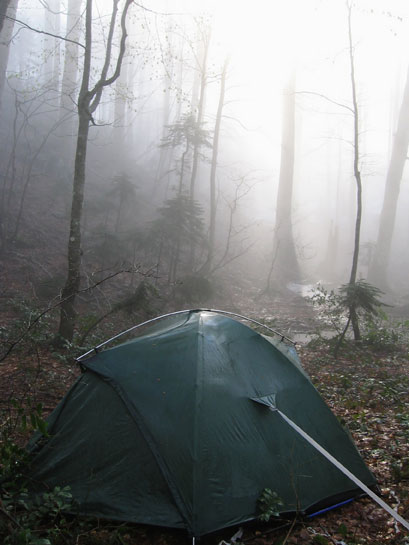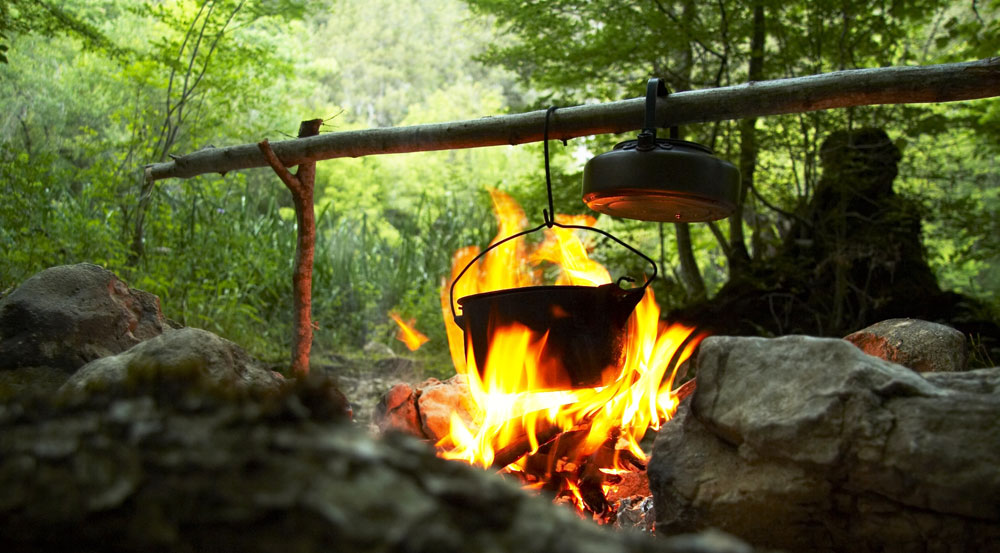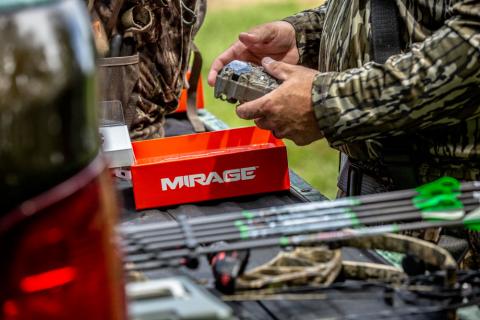 Rain sometimes seems like a death sentence to outdoor activities–especially camping–but it doesn’t have to be. On the contrary, camping in the rain can be remarkably peaceful and, yes, even dry. Achieving a dry tent in rainy weather can become your badge of honor and help get you more in touch with the environment, perhaps more in touch than you originally planned on being.
Rain sometimes seems like a death sentence to outdoor activities–especially camping–but it doesn’t have to be. On the contrary, camping in the rain can be remarkably peaceful and, yes, even dry. Achieving a dry tent in rainy weather can become your badge of honor and help get you more in touch with the environment, perhaps more in touch than you originally planned on being.
Here are seven tips for keeping your tent dry and having a rewarding time out in the rain. Grab your camping rain gear and get ready to write your camping in the rain checklist.
1. Don’t forget your groundsheet
Also called a ground cloth or even, by some, a ground fly, a groundsheet is simply a piece of waterproof material that protects the footprint (or the bottom) of your tent. It acts as a barrier between the bottom of your tent and the ground, thereby allowing water to flow under or around your tent without seeping into your dry space.
A groundsheet is critical for staying dry. If you don’t use one, and it rains even a bit, you will most likely wake up wet and profoundly unhappy. However, a solid tent plus a groundsheet can keep you dry in light rains or even moderate drizzles. Think of it this way: Groundsheet equals happiness.
If you don’t have a groundsheet, try using an old tarp that is larger than your tent’s footprint. Set your tent up on top of the tarp and then fold the excess tarp underneath the tent and first layer of top. Do not leave excess tarp sticking out from underneath the tent or fold your tarp’s extra corners over itself. If you do, the tarp will just collect water and act as your own private (if unexpected and uninvited) swimming pool.
2. Tarp up
Tarps are great for many things. Not only are lightweight tarps extremely useful rain gear in survival scenarios, but tarps, in general, are a wonderful camping staple. Always pack a few extra. They’re essential camping rain gear.
If you’re getting ready for rain as you set up your tent, simply use paracord to string up an extra tarp roof above your tent. This will act as an extra barrier against wind and rain and help keep you dry. Here are a few more tips and guidelines for tarping up.
- Remember to slant your “spare tarp roof” downhill. In other words, make sure that the excess water runs off the tarp downhill of your tent, not uphill. There’s no point in redirecting rainwater underneath your tent.
- If you’re lacking in the tree department, try using hiking poles, sticks or other lightweight camping poles. Stick them in the ground securely and string up the tarp between them.
- Angle your tarp’s high point away from the wind. Otherwise, the wind might catch your tarp and carry it away.
3. Consider your campfire
Get your fire going before it starts raining if you can. If you get it going and plan your fuel storage, your fire will resist rain and provide you with some heat for the duration of the evening.

Next, you can set up tarps close to (but not directly above–no need for a fire hazard) the campfire to allow for additional dry cooking space and dry firewood storage. This can let you get close to the fire without getting wet, enjoy the warmth after a long day hunting or hiking and dry your clothes.
However, there is, of course, a chance that the rain will be of biblical proportions, but this doesn’t mean your camping trip must necessarily be abysmal. Simply pack a quality camping stove, some hand warmers and dry clothes. That way, you can still enjoy the comforts of a hot meal and warming up without having to fuss over sodden firewood.
4. Angle for the weather
Throughout your entire camp set up, think about the angles: the angle of the ground, the angle of your tarps and even the angle at which the wind will drive the rain. For example:
- Set up your tent on a slight angle (not so extreme that you slide downhill in your tent) so the water flows by instead of pooling underneath you.
- Set up your campfire on a slight slant, if possible, so water doesn’t pool underneath the coal bed.
- Make sure to secure your tent with guylines and keep your guylines tight and at opposing angles (put equal tension on both sides of the tent).
- If you’re expecting any wind, try to set up your tent with the entryway facing away from the wind.
- Don’t camp close to or below a body of water–think about where the water will go if it floods.
5. Hammock camp
Are you considering a kayaking trip or a hunting trip that entails camping on land that might flood or collect water? Make your own non-traditional tent by hammock camping.

Hammock camping has the distinct benefit of keeping you and your stuff off the ground. Tarp up over your hammock and hang all gear underneath your tarp and from a line of paracord.
That way, the ground can literally be covered with water and you will still wake up dry. It’s a great way to skip the groundsheet. If you’re planning an early fall kayaking trip, this might be an excellent way to camp in a rain-prepared manner.
6. Store your gear in dry bags
This doesn’t take much explanation. If you want dry clothes or electronics to stay dry, put them in something waterproof. A large, well-made dry bag is an instrumental piece of gear and can help you immensely when camping in the rain. You will be much happier for having brought one.
7. Use quality rain gear
This one might seem fairly obvious, but use quality camping rain gear. Invest in waterproof pants, a good rain jacket and a solid tent.
Conclusion
As long as you prepare well, camping in the rain can be remarkably invigorating. While you can never absolutely guarantee to stay dry, you can prepare for the rain and use common sense. You can examine your campsite and make thoughtful decisions.
This, in turn, can reveal or accentuate features of the landscape you would otherwise never notice. That is the beauty of camping in the rain. It forces you to pay attention, to open your eyes, to see what you wouldn’t.




























